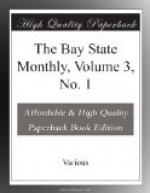Upon the movement of General Zolicoffer into Kentucky, Mr. Coffin hastened to Louisville, Lexington, and Central Kentucky, but finding affairs had settled down, hastened down the Ohio River on a steamboat, reaching the mouth of the Tennessee just as the fleet under Commodore Foot was entering the Ohio after capturing Fort Henry. Commodore Foot narrated the events of the engagement, and Mr. Coffin, learning that no correspondent had returned from Fort Henry, stimulated by the thought of giving the Boston Journal the first information, jumped on board the cars, wrote his account on the train, and had the satisfaction of knowing that it was the first one published.
Returning to Cairo by the next train, he proceeded to Fort Donelson and was present in the cabin of the steamer “Uncle Sam” when General Buckner turned over the Fort, the Artillery, and 15,000 prisoners to General Grant. He hastened to Cairo, wrote his account on the cars, riding eastward, till it was complete, then returning, and arriving in season to jump on board the gunboat Boston for a reconnoissanceof Columbus.
Mr. Coffin continued with the fleet during the operation at Island No. 10. His knowledge of civil engineering enabled him to assist Captain Maynadier of the engineers in directing the mortar firing. On one occasion while mounted on a corn crib near a farm-house to note the direction of the bombs, the Confederate artillerists sent a shell which demolished a pig-pen but a few feet distant.
While at Island No. 10, the battle of Pittsburg Landing was fought. Leaving the fleet he hastened thither, accompanied the army in its slow advance upon Corinth, was present at the battle of Farmington and the occupation of Corinth.
General Halleck, smarting under the criticism of the press, ordered all correspondents to leave, and Mr. Coffin once more joined the fleet, descending the Mississippi. During the engagement with the Confederate fleet at Memphis, he stood upon the deck of the Admiral’s despatch boat with note-book and watch in hand—noting every movement. He was fully exposed, aided in hauling down the flag of the Confederate ship, “Little Rebel,” and assisted in rescuing some of the wounded Confederates from the sinking vessels.
He accepted an invitation from Captain Phelps of the Benton to accompany him on shore when the city was surrendered, and saw the stars and strips go up upon the flag-staff in the public square and over the Court House.
The Army of the Potamac was in front of Richmond, and he returned east in season to chronicle the seven day’s engagement on the Peninsular. The constant exposure to malaria brought on sickness, which prevented his being with the army in the engagement at the second Bull Run, but he was on the field of Antietam throughout the entire contest, and wrote an account which was published in the Baltimore American, of which an enormous edition was disposed of in the army—and was commended for its accuracy.




